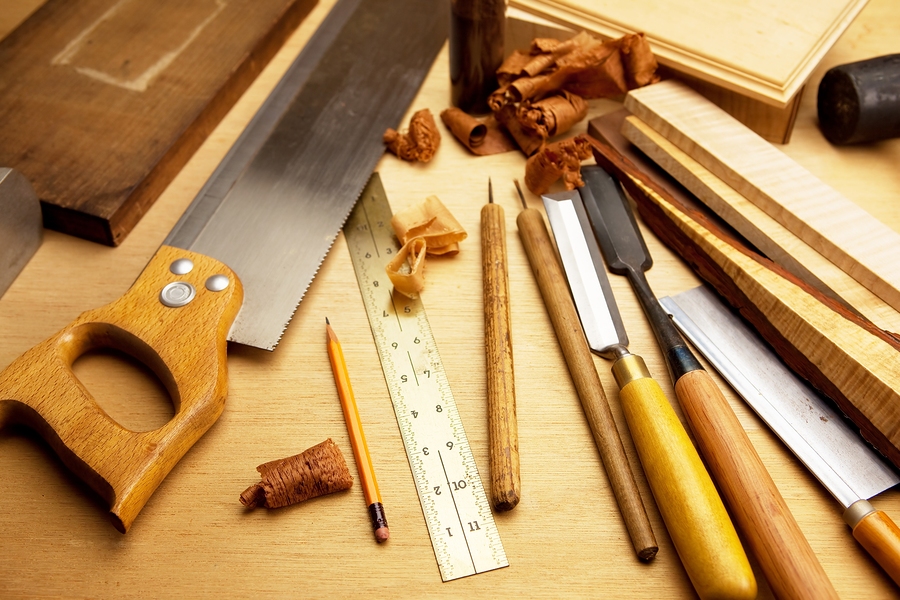Get hands on with woodworking
Many people take a lot of pleasure doing DIY and carpentry around the home as it offers the chance to work on a focused project that’s both creative and precise.
Over time though as there are fewer tasks left to complete around the house you might not have occasion to use your tools as often or could be out of ideas as to what to do next.
Taking up woodworking is a great way to put some of those same skills back to work – as a hobby it requires planning and demands precision, and you have the opportunity to work with tools and roll up your sleeves to get creative.
From small projects to large ones, there’s plenty to keep you challenged if you’d like to take up woodworking.
Getting started
Create a workspace
In the early cutting and carving stages, woodworking can be a messy hobby, and it’s one that demands its own dedicated workspace. The garage or garden shed is an ideal location, or if you’re going to be working over the summer, set up a worktable in your back garden and spend some time outdoors.
Make sure your space has enough room for you to work and is well lit, and if you’re planning to take on larger projects like building furniture ensure your power tools can be locked away and are not easily accessed by pets or grandchildren who could get hurt.
Assemble your tools
Depending on your level of experience or the type of project you intend to take on, getting started typically only requires a few inexpensive tools. Cutting wood with precision will be an essential part of any project, but first comes measuring and marking; make sure you have a tape measure, carpenter’s pencil and combination square when you get started.
To cut the wood, a handheld circular saw is ideal for straight cuts, but for smaller projects, a handheld backsaw is a cheaper – and quieter – alternative that should do just fine. Other tools you may need include a block plane and router to shape the wood and create patterns, and a few clamps to hold large pieces of wood in place.
You can find tools at your local hardware store, or online at specialist shops like Rutlands, which offer state of the art tools for every stage of your woodworking project.
Get your raw materials
In addition to your wood, materials like nails, screws and wood glue will likely be necessary depending on what you’re creating. Once your project is assembled, you’ll also likely need sandpaper to help smooth the edges before entering the final decorative stages.
Also consider the finish; linseed oil or furniture wax will provide a basic finish, while more durable seals and finishes will be necessary for furniture projects.
Plan your project
Take some time to consider what you’d like to make and draw out the dimensions so help ensure you have everything you need. For inspiration and other useful tips, resources like Fine Woodworking Plans are invaluable when you’re first starting out.
Websites like Woodworking Projects and online resources like UK Workshop are both full of ideas and inspiration, from simple projects for beginners to more advanced projects.
Consider your safety
Your safety is extremely important when undertaking woodworking projects so don’t overlook the small details. Gloves, safety goggles and protective footwear are all essential when you’re working with tools and will help protect you from injury.
Never work when you’re tired or distracted, and take the time to understand your tools and make sure they are maintained and calibrated.
Rachel - Silversurfers Assistant Editor
Latest posts by Rachel - Silversurfers Assistant Editor (see all)
- Graham Norton’s funniest interviews - April 2, 2024
- Chocolate dipped strawberries for Easter - March 28, 2024
- Elton John’s Greatest Hits Playlist - March 24, 2024
- The best of Diana Ross - March 23, 2024
- Easter activities for grandchildren - March 23, 2024






















